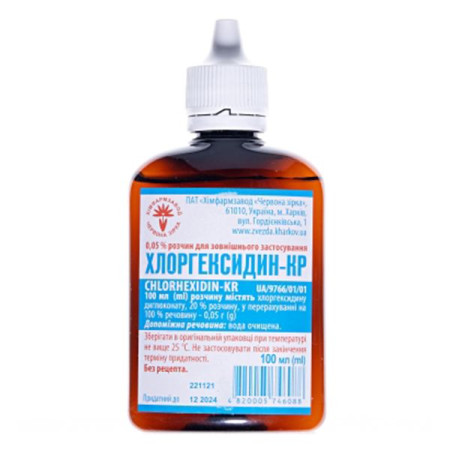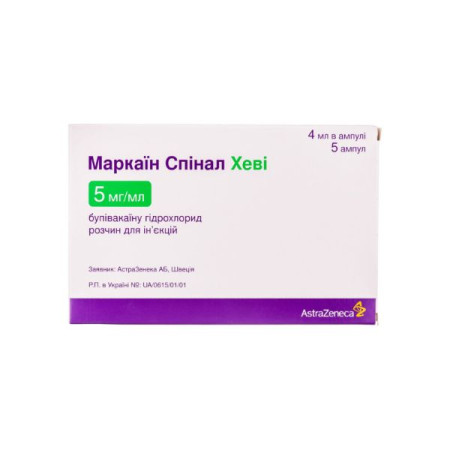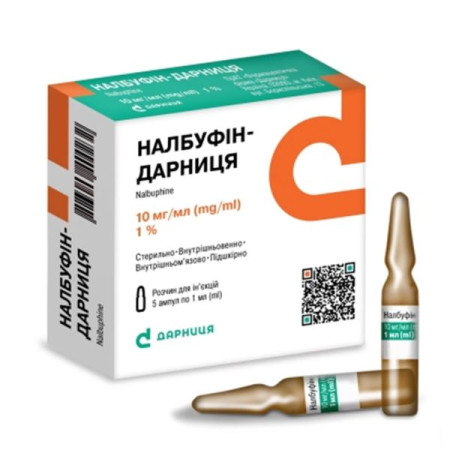Mydocalm solution for injection 100 mg ampoule 1 ml No. 5

Instructions for use Mydocalm solution for injection 100 mg ampoule 1 ml No. 5
Composition
active ingredients: tolperisone hydrochloride, lidocaine hydrochloride;
1 ml of solution contains 100 mg of tolperisone hydrochloride and 2.5 mg of lidocaine hydrochloride;
Excipients: methyl parahydroxybenzoate (E 218), diethylene glycol monoethyl ether, water for injections.
Dosage form
Solution for injection.
Main physicochemical properties: colorless or slightly greenish transparent solution, practically free of particles.
Pharmacotherapeutic group
Muscle relaxants with a central mechanism of action.
ATX code M03V X04.
Pharmacological properties
Pharmacodynamics
Tolperisone is a centrally acting muscle relaxant. The mechanism of action of tolperisone is not fully understood.
It has a high affinity for nervous tissue, reaching the highest concentrations in the brainstem, spinal cord, and peripheral nervous system.
The most significant effect of tolperisone is its inhibitory effect on the spinal reflex pathway. It is likely that this effect, together with the inhibitory effect on the descending pathways, determines the therapeutic benefit of tolperisone.
The chemical structure of tolperisone is similar to that of lidocaine. Like lidocaine, it has a membrane-stabilizing effect and reduces the electrical excitability of motor neurons and primary afferent fibers. Tolperisone dose-dependently inhibits the activity of voltage-gated sodium channels. Accordingly, the amplitude and frequency of the action potential are reduced.
It has been shown to have an inhibitory effect on voltage-gated calcium channels. It is assumed that in addition to its membrane-stabilizing effect, tolperisone may also inhibit mediator release.
To top it all off, tolperisone has some weak alpha-adrenergic antagonist properties and exerts antimuscarinic effects.
Clinical efficacy and safety
The effectiveness of tolperisone in the treatment of muscle spasm after a stroke has been proven.
In a randomized, double-blind, placebo-controlled trial of 120 patients with post-stroke muscle spasm, tolperisone treatment resulted in a highly significant reduction in the primary endpoint of spasticity on the Ashworth scale. Tolperisone was superior to placebo in the overall physician and investigator efficacy assessment (p < 0.001). The mean improvement on the Ashworth scale was 32% in the overall intention-to-treat (ITT) population and 42% in the subgroup of patients receiving tolperisone 300–450 mg/day. Tolperisone was also superior to placebo in functional tests, but the differences were not statistically significant.
In a randomized, double-blind, comparative study of 48 patients with brain injury, the efficacy of tolperisone on the Barthel index was comparable to that of baclofen. At the same time, tolperisone was superior to baclofen in improving the Rivermead Motor Assessment Scale (RMAS).
The evidence for the efficacy of tolperisone in treating increased muscle tone in patients with musculoskeletal conditions other than post-stroke muscle spasm is conflicting. Some studies have reported positive results on some tests, while others have failed to show any benefit of tolperisone in these conditions.
The safety profile of tolperisone is based on data from clinical studies involving patients with increased muscle tone of various etiologies, as well as on data from spontaneous reports of adverse reactions.
Pharmacokinetics
It is extensively metabolized in the liver and kidneys. It is excreted by the kidneys, more than 99% - in the form of metabolites. The pharmacological activity of the metabolites is unknown. With intravenous administration, the half-life is approximately 1.5 hours.
Preclinical safety data
Based on non-clinical data on safety pharmacology, repeated dose toxicity, genotoxicity, and toxicity to reproduction, no specific risk to humans was identified.
Effects in preclinical studies were observed only at doses significantly in excess of the maximum human exposure, indicating little relevance to clinical use.
Embryotoxic changes were observed in rats and rabbits at oral doses of 500 mg/kg body weight and 250 mg/kg body weight, respectively. However, these doses are many times higher than the recommended therapeutic dose for humans.
Indication
Muscle spasticity, including post-stroke spasticity, in cases where the injectable form is the method of choice.
Contraindication
Hypersensitivity to the active substances or to eperisone, which is chemically similar to tolperisone, as well as to any of the excipients and to other amide local anesthetics.
Myasthenia gravis.
Breastfeeding period.
Childhood.
Interaction with other medicinal products and other types of interactions
Pharmacokinetic studies of drug interactions with dextromethorphan, a CYP2D6 substrate, have demonstrated that co-administration of tolperisone increases plasma concentrations of drugs that are predominantly metabolized by cytochrome CYP2D6, including thioridazine, tolterodine, venlafaxine, atomoxetine, desipramine, dextromethorphan, metoprolol, nebivolol, and perphenazine.
In vitro studies in human liver microsomes and hepatocytes did not reveal any significant inhibition or induction of other CYP isoenzymes (CYP2B6, CYP2C8, CYP2C9, CYP2C19, CYP1A2, CYP3A4).
It is expected that co-administration with other CYP2D6 substrates and/or other drugs will not increase exposure to tolperisone, due to the diversity of tolperisone metabolic pathways.
Although tolperisone is a centrally acting drug, the likelihood of developing a sedative effect when using it is low. In the case of simultaneous administration with other centrally acting muscle relaxants, it is necessary to consider reducing the dose of tolperisone.
Tolperisone potentiates the effects of niflumic acid, therefore, when taken simultaneously with tolperisone, it is advisable to reduce the dose of niflumic acid, as well as other NSAIDs.
Application features
The injectable form of the drug should not be administered to children.
Hypersensitivity reactions
During post-marketing surveillance, the most frequently reported hypersensitivity reactions with tolperisone were: hypersensitivity reactions. Their severity ranged from mild skin reactions to severe systemic reactions, including anaphylactic shock. Symptoms of hypersensitivity reactions may include erythema, rash, urticaria, pruritus, angioedema, tachycardia, hypotension or dyspnoea.
In women with hypersensitivity to other drugs or a history of allergic conditions, the risk of hypersensitivity reactions when taking tolperisone is higher.
Patients should be advised to be aware of possible allergies. Patients should be informed that if symptoms of allergy occur, they should stop taking tolperisone and seek immediate medical attention.
After an episode of hypersensitivity to tolperisone, the drug should not be re-administered.
The drug contains lidocaine, therefore, in case of known hypersensitivity to lidocaine, as well as to other amide local anesthetics, Mydocalm for injection should not be used due to the possibility of developing cross-allergic reactions.
Excipients
Mydocalm solution for injection contains methyl parahydroxybenzoate (E 218). This may cause allergic reactions (possibly delayed) and in rare cases bronchospasm.
Use during pregnancy or breastfeeding
According to animal studies, tolperisone does not have a teratogenic effect.
Due to the lack of significant clinical data on the use of this drug, Mydocalm should not be used during pregnancy.
Since it is not known whether tolperisone passes into breast milk, the use of Mydocalm during breastfeeding is contraindicated.
Ability to influence reaction speed when driving vehicles or other mechanisms
Given the possibility of developing symptoms such as dizziness, drowsiness, impaired attention, epilepsy, blurred vision, the drug should be used with caution when driving or working with other mechanisms.
Method of administration and doses
For parenteral administration only.
For adults only. Administer the drug intramuscularly at 100 mg twice daily or as a slow intravenous injection at 100 mg once daily.
The injection solution should not be used in children.
The duration of treatment is determined by the doctor depending on the nature of the disease and the effectiveness of the treatment.
Patients with renal impairment
Experience in patients with renal impairment is limited, and a higher incidence of adverse effects has been reported in such patients. Therefore, in patients with moderate renal impairment, individual dose titration with careful monitoring of the patient's condition and renal function is recommended. In patients with severe renal impairment, tolperisone is not recommended.
Patients with liver dysfunction
Experience with the use of the drug in patients with liver damage is limited, a higher frequency of adverse events was noted in such patients. In this regard, in moderate liver damage, individual dose titration with careful monitoring of the patient's condition and control of liver function is recommended. In severe liver damage, tolperisone is not recommended.
Children
Mydocalm injection solution should not be used in children.
Overdose
Data on overdose of tolperisone are insufficient.
Symptoms of overdose may mainly include drowsiness, gastrointestinal symptoms (nausea, vomiting, epigastric pain), tachycardia, hypertension, bradykinesia and vertigo. In severe cases, convulsions and coma have been reported.
There is no specific antidote for tolperisone. In case of overdose, symptomatic treatment is recommended.
Adverse reactions
Adverse reactions are listed by system organ class according to the MedDRA Medical Dictionary of Regulatory Activities using the following MedDRA frequency definitions: very common (≥ 1/10), common (≥ 1/100, <1/10), uncommon (≥ 1/1000, <1/100), rare (≥ 1/10000, <1/1000), unknown frequency (cannot be estimated from the available data).
According to post-marketing surveillance, approximately 50-60% of adverse reactions associated with tolperisone are hypersensitivity reactions. Most of these reactions were mild and self-limiting. Life-threatening hypersensitivity reactions have occurred in isolated cases.
| Organ system cash registers | Common (≥1/100, <1/10) | Infrequent (≥1/1000, <1/100) | Single (≥1/10000, <1/1000) | Rare (<1/10,000) |
| Blood and lymphatic system disorders | Anemia Lymphadenopathy | |||
| Immune system disorders | Hypersensitivity reaction Anaphylactic reaction | Anaphylactic shock | ||
| Nutritional and metabolic disorders | Anorexia | Polydipsia | ||
| Mental disorders | Insomnia Sleep disturbances | Decreased activity Depression | Confusion of consciousness | |
| Nervous system disorders | Headache Dizziness Drowsiness | Attention deficit disorder Tremor Convulsions Hypoesthesia Paresthesia Lethargy (increased drowsiness) | ||
| Visual impairment | Vision impairment | |||
| Hearing and balance disorders | Tinnitus Vertigo (dizziness) | |||
| Cardiac disorders | Angina pectoris Tachycardia Rapid heartbeat Lowering blood pressure | Bradycardia | ||
| Vascular disorders | Hypotension | Skin hyperemia | ||
| Respiratory, thoracic and mediastinal disorders | Difficulty breathing Nosebleed Dyspnea | |||
| Gastrointestinal disorders | Feeling of discomfort in the stomach Diarrhea Dryness of the oral mucosa Dyspepsia Nausea | Epigastric pain Constipation Flatulence Vomiting | ||
| Liver and biliary tract disorders | Mild liver damage | |||
| Skin and subcutaneous tissue disorders | Allergic dermatitis Hyperhidrosis Itch Urticaria Rash | |||
| Musculoskeletal and connective tissue disorders | Muscle weakness Myalgia Pain in the extremities | Feeling of discomfort in the extremities | Osteopenia | |
| Renal and urinary disorders | Enuresis Proteinuria | |||
| General disorders and administration site conditions | Redness and warmth at the injection site | Asthenia Discomfort Increased fatigue | Feeling intoxicated Feeling hot Irritability Thirst | Feeling of discomfort in the chest |
| Laboratory indicators | Lowering blood pressure Increased bilirubin concentration in the blood Change in liver enzyme activity Decreased platelet count Leukocytosis | Increased creatinine concentration in the blood |
Expiration date
3 years.
Storage conditions
Store at 8–15 °C in the original packaging to protect from light.
Keep the medicine out of the reach of children!
Incompatibility.
There are no data on compatibility studies, so Mydocalm should not be mixed with other drugs in the same syringe. It should be administered separately from other drugs.
Packaging
1 ml in a brown glass ampoule, 5 ampoules in a cardboard box.
Vacation category
According to the recipe.
Producer
JSC "Gedeon Richter".
Location of the manufacturer and its business address
H-1103, Budapest, Demrei Str. 19-21, Hungary,
There are no reviews for this product.
There are no reviews for this product, be the first to leave your review.
No questions about this product, be the first and ask your question.









